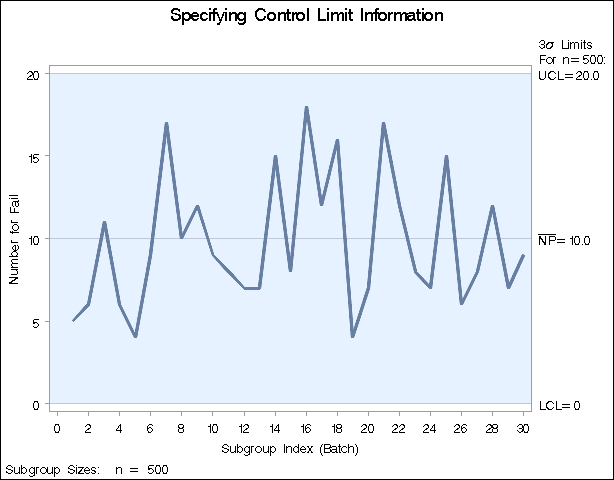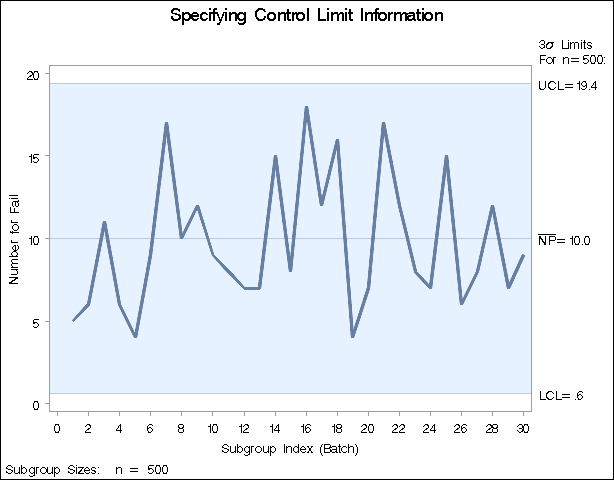NPCHART Statement: SHEWHART Procedure
See SHWNP5 in the SAS/QC Sample LibraryThis example shows how to use the DATA step to create LIMITS= data sets for use with the NPCHART statement. The variables
_VAR_ and _SUBGRP_ are required. These variables must be character variables whose lengths are no greater than 32, and their values must match
the process and subgroup-variable specified in the NPCHART statement. In addition, you must provide one of the following:
-
the variables
_LCLNP_,_NP_, and_UCLNP_ -
the variable
_P_
The following DATA step creates a data set named Climits1, which provides a complete set of control limits for an ![]() chart:
chart:
data Climits1; length _var_ _subgrp_ _type_ $8; _var_ = 'Fail'; _subgrp_ = 'Batch'; _limitn_ = 500; _type_ = 'STANDARD'; _lclnp_ = 0; _np_ = 10; _uclnp_ = 20; run;
The following statements read the control limits[66] from the data set Climits1 and apply them to the count data in the data set Circuits, which is introduced in Creating np Charts from Count Data:
ods graphics off; title 'Specifying Control Limit Information'; proc shewhart data=Circuits limits=Climits1; npchart Fail*Batch / subgroupn = 500; run;
The chart is shown in Output 17.21.1.
The following DATA step creates a data set named Climits2, which provides a value for the expected proportion of nonconforming items (_P_). This parameter is then used to compute
the control limits for the data in Circuits according to the equations in Control Limits.
data Climits2; length _var_ _subgrp_ _type_ $8; _var_ = 'Fail'; _subgrp_ = 'Batch'; _limitn_ = 500; _type_ = 'STANDARD'; _p_ = .02; run;
title 'Specifying Control Limit Information'; proc shewhart data=Circuits limits=Climits2; npchart Fail*Batch / subgroupn = 500; run;
The chart is shown in Output 17.21.2. Note that the control limits are not the same as those shown in Output 17.21.1.


